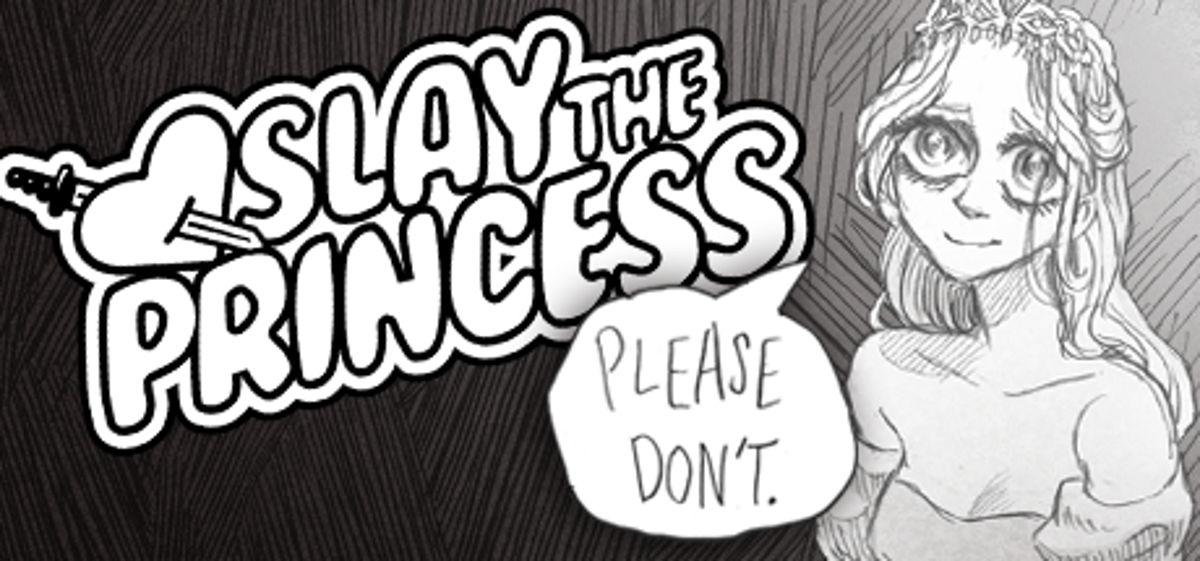

Slay the Princess is a visual novel game that has taken some time to develop. It has had three major releases so far. The first which was strictly chapter 1. The second demo was chapter 1 and chapter 2. The full release of the game includes chapter 3 and the various endings in the game.
In our guide we go over the story and various endings in this deep psychological visual novel that has a lot to think on and over 15 hours of content, all voice acted. It’s a mix of The Stanely Parable and every one of your favorite visual novel games, really.
In a recent “End of Everything” update, some changes were made. We’ve reflected those below.
Without further explanation, here’s our story and endings explained:
The game has multiple routes and paths that you can take, each one resulting in a different ending. No matter the route, the game’s very first start is always the protagonist waking up in a forest, guided by a voice known as the narrator.
The narrator tells him that at the end of the path is a cabin, and in the basement of that cabin is a princess. His mission is to slay this princess, or else the world will come to an end.
Each of the options choosen (none explore options), results in a different path and a different princess. Going to the cabin produces a choice of taking a knife or not, saving the princess or not. Leaving results in the cabin following the player, a seperate route that we’ll take note of later.
No matter the choices taken (other than leaving), the protaganist or the princess will be slain. This will result in a chapter 2, taking the context of the previous chapter. Here, the cycle plays out again, this time the choices leading into a chapter 3. If you survive long enough in chapter 3, hands will arrive and take the princess.
The ascending form of the princess will request more vessels, after enough are acquired a “final” ending is given.
If you rebel and provide no vessels to the ascended form, you get an alternate ending.
It’s revealed that the protagonist (the long quiet) and princess (the shifting mound) are ancient gods, woven together. The princess is the shifting nature of death and existence. The protagonist is her counterpart, the only one capable of permanently destroying her.
The narrator is an echo of the creator god who originally made this realm. He split the protagonist and princess to give the protagonist a chance to contain the princess’ destructive nature. Each time they die, their consciousness resets into a new looping reality.
The princess changes based on how the protagonist perceives her – she becomes a monster, a damsel, or an angry witch based on his choices. Through the loops, the protagonist’s personality also splits into different voices in his mind.
By starving the princess of interacting with the protagonist and denying her vessels, the protagonist can resist her and remain separated. Or he can aid her by feeding different versions of her, allowing her to grow stronger and more multidimensional.
If completed, she breaks free, urging the protagonist to join her in destroying worlds across dimensions. Here he can choose to resist her for a difficult but heroic ending. Or he can embrace his nature and bring ruin to all existence alongside her.
Other endings involve the protagonist turning away from his duty, fleeing into unknown worlds with the princess, or trapping them both in an eternal loop where their memories reset each time.
No matter the ending, there is a bittersweet undercurrent – the protagonist and princess have a strained but undeniable connection, two halves of one whole. Their fates are interdependent, whether joined in oblivion or separated for eternity.
The Narrator is an aspect of the creator who trapped the god into this realm and split its personality into the princess (the cruel) and the protagonist (the heroic). The goal is to purge the cruelness from the god and the Narrator works towards that goal. The Narrator’s ending is if you do everything he asks, you are left in the void alone forever, without the princess.
Created by the creator, likely from the same thing you were created from and then split from you. You’re more or less resetting within this world the creator made to see what becomes of the two of you. The princess is shaped by how you perceive her each playthrough, how you treat the princess defines what she is. The princess is a reflection of you, hence the mirror.
The princess forming itself through the various aspects of itself that you perceive. If allowed to complete, it will ascend and offer you the choice of joining it or resisting and defeating it.
Want to tighten up your timing and play like a pro? This guide dishes out…
Want to crush it in Marvel Rivals? Learn how to build killer 6v6 teams with…
Want to crush it in VALORANT? This guide breaks down Agent roles, pro tips, and…
Yeehaw! Cozy up in the Wild West with Cattle Country—farm, befriend, and explore before its…
Cowabunga! TMNT: Splintered Fate hits PlayStation May 20 and Xbox June 24—plus physical editions drop…
Strap on your VR headset—Surviving Mars: Pioneer lands in Early Access May 8! Build, explore,…
This website uses cookies.